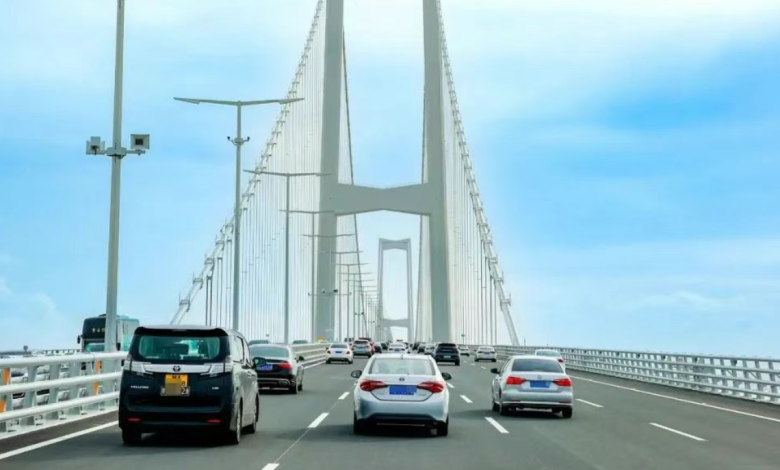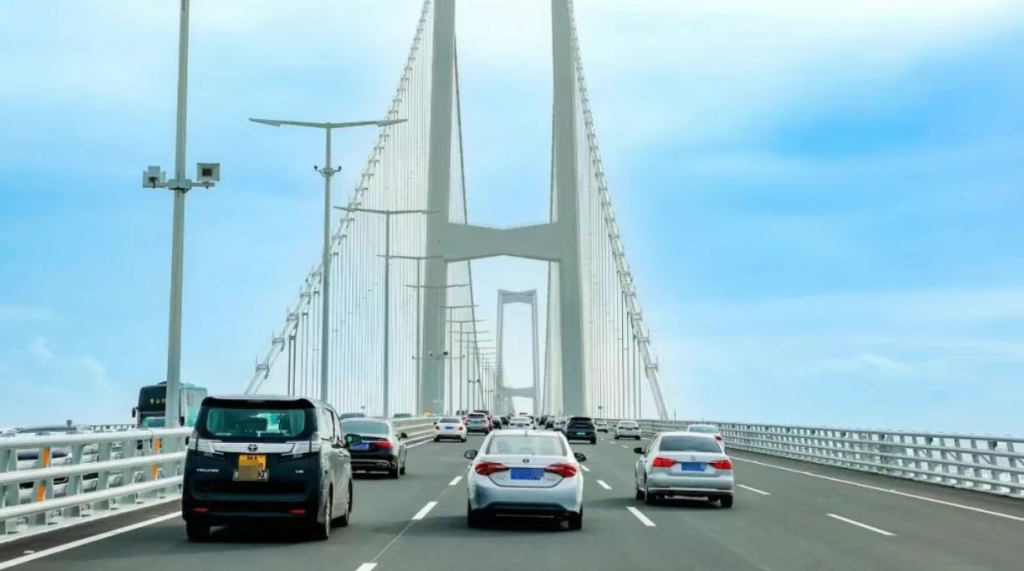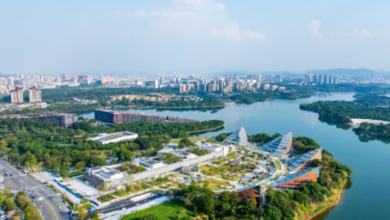Driving to Hong Kong from Guangdong: “Southbound Guangdong Vehicles” Policy to Launch in November

For years, travelers between Guangdong and Hong Kong have eagerly awaited the ability to drive across the border without switching to public transport. The wait is finally over—the “Southbound Guangdong Vehicles” policy is set to launch in November 2025, allowing eligible Guangdong-registered private cars to enter Hong Kong via the Hong Kong-Zhuhai-Macao Bridge (HZMB).
This groundbreaking initiative follows the success of “Northbound Hong Kong Vehicles” , which has seen over 100,000 Hong Kong cars crossing into Guangdong since 2023. Now, the reciprocal arrangement will enable mainland drivers to explore Hong Kong more freely, though with initial restrictions to manage traffic impact.
In this guide, we’ll break down everything you need to know about the new policy—eligibility, quotas, parking options, driving regulations, and practical tips—so you can plan your first cross-border road trip with confidence.

1. Key Details: When and How “Southbound Guangdong Vehicles” Will Work
The first phase of the policy begins in November 2025, with two main entry options for Guangdong drivers:
A. Airport Parking for Transit Passengers (No Immigration Needed)
- A fully automated 5-story “Transit Parking Lot” near the HZMB Hong Kong Port will offer 1,800 parking spaces.
- Drivers can park and take a shuttle bus directly to Hong Kong International Airport’s restricted zone, bypassing immigration checks.
- This is ideal for travelers flying internationally, as they can check in and drop luggage without entering Hong Kong.
- The lot is expected to handle 500 vehicles daily, with average stays of 3–4 days.
B. Driving into Hong Kong’s Urban Areas (Limited Quotas)
- Initially, only 100 vehicles per day will be permitted to enter Hong Kong’s urban areas.
- Drivers must park at the HZMB Hong Kong Port and switch to public transport (buses, MTR) to reach downtown.
- If traffic conditions remain stable, quotas will expand, and direct access to areas like Lantau Island may be allowed.
Why the restrictions? Hong Kong’s narrow roads, left-hand traffic, and high parking costs make large-scale mainland vehicle entry challenging. Authorities are taking a gradual approach to assess congestion before full implementation.
2. Requirements: Licenses, Insurance, and Vehicle Checks
Before driving into Hong Kong, Guangdong motorists must meet several legal requirements:
A. Vehicle & Driver Documentation
- Hong Kong Vehicle Permit: Apply through the Hong Kong Transport Department, including a vehicle inspection to ensure compliance.
- Hong Kong Driver’s License: Mainland drivers can convert their Chinese license to a Hong Kong one (valid for the same vehicle type).
- Third-Party Insurance: Mandatory for all vehicles entering Hong Kong. Short-term policies tailored for “Southbound Guangdong Vehicles” may be introduced.
B. Traffic Rules & Penalties
- Left-Hand Driving: Hong Kong follows right-hand drive (RHD) rules, meaning you must stay left and overtake on the right.
- Roundabout Priority: Vehicles inside a roundabout have the right of way.
- Speed Limits:
- Highways: Typically 80 km/h (some newer roads like West Kowloon allow 110 km/h).
- Urban Areas: Usually 50 km/h.
- Traffic Signals: A green light only permits left turns or going straight—right turns are prohibited unless a separate arrow is lit.
- Fines Start at HK$200 for violations (e.g., illegal parking, speeding).
Personal tip: If you’re not used to RHD driving, consider practicing in a simulator or opting for public transport in busy areas like Central or Tsim Sha Tsui.
3. Parking Challenges & Costs in Hong Kong
One of the biggest hurdles for mainland drivers? Hong Kong’s notoriously expensive and scarce parking.
A. On-Street Parking (Metered Spaces)
- Urban Rates: HK$2 per 15 minutes (or HK$2 per 30 minutes in less busy areas).
- Time Limits:
- Yellow meters: Max 30 minutes (must repark or repay).
- Brown meters: Max 1 hour.
- Blue meters: Max 2 hours.
- Overstaying? A HK$320 fine is common.
B. Off-Street Parking (Commercial Lots)
- Shopping Malls: HK$20–50/hour (higher during peak times).
- Monthly Rentals: HK$2,000–7,000, depending on location.
My experience: During a weekend trip to Causeway Bay, I paid HK$45/hour at a mall—nearly ¥40! If driving into the city, pre-book parking online or use apps like HK Parking to find cheaper options.
4. Cost Comparison: Driving vs. Public Transport
Is driving to Hong Kong worth it? Let’s break down the costs:
| Expense | Driving (One Way) | High-Speed Rail (Guangzhou → HK) |
|---|---|---|
| Bridge Toll | ¥150 | – |
| Parking (6 hrs) | ~HK$240 (¥220) | – |
| Insurance | ~HK$300 (¥280) | – |
| Fuel | ~¥200 | – |
| Total (Approx.) | ¥700+ | ¥215 (2nd Class) |
Verdict: If heading to Hong Kong Island or Kowloon, the high-speed train (Guangzhou South → West Kowloon, 48 mins) is faster and cheaper. However, driving is ideal for airport transfers or exploring Lantau.
5. Future Expansion: What’s Next for “Southbound Guangdong Vehicles”?
The policy is designed in four phases:
- Initial Trial (Nov 2025): 100 cars/day, restricted to HZMB port + public transport transfers.
- Expanded Access (2026): Increased quotas + access to Lantau Island.
- Urban Entry (2027+): Full access to Hong Kong if traffic tests succeed.
- Seamless Integration: Long-term goal of unrestricted cross-border travel within the Greater Bay Area.
Additionally, SKYTOPIA—a new “airport city” near HZMB—will open in early 2026, offering entertainment, shopping, and events (like concerts at AsiaWorld-Expo). This could make self-driving trips for tourism more appealing.
Final Thoughts: Should You Drive to Hong Kong?
The “Southbound Guangdong Vehicles” policy is a game-changer for airport transfers and future tourism, but urban driving remains challenging due to:
- Strict quotas (only 100 cars/day initially).
- High parking costs (up to HK$50/hour in prime areas).
- Left-hand traffic adjustments.
My recommendation:
- For airport trips: Absolutely—self-driving + parking at the HZMB Transit Lot is far more convenient than taxis or buses.
- For city travel: Stick to MTR, buses, or high-speed rail unless you’re comfortable with Hong Kong’s driving conditions.
As quotas expand and infrastructure improves, this policy could revolutionize cross-border travel—making the Greater Bay Area more connected than ever.
Would you drive to Hong Kong, or prefer public transport? Let us know in the comments!





